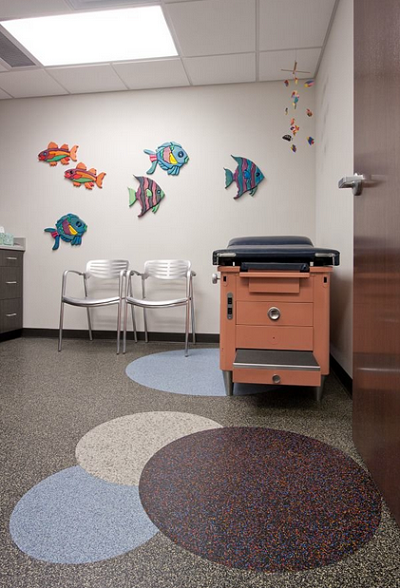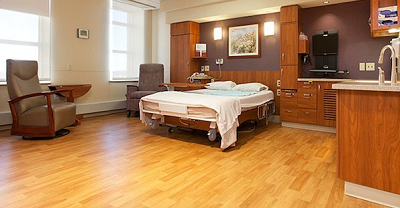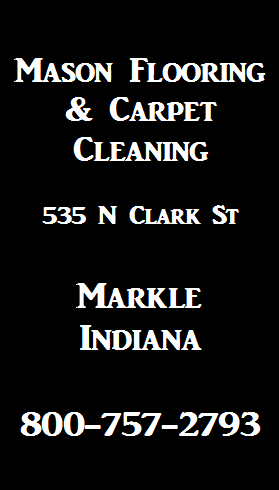
Mark Huxta recently wrote an informative article about flooring for healthcare. The focus of the article is about hospitals and facilities, expected to provide a safe and healthy environment for patients and a positive working experience for the staff who cares for them. Mr. Huxta makes an important point: the nurse's physical and emotional health has an impact on the quality of care that they deliver.
Considering the above, there is a good reason why hospitals are focusing their efforts on enhancing ergonomic conditions within the working environment. It improves productivity and retention. Improved seating, better work tools, and new technology are collectively contributing to a more ergonomically-friendly healthcare space. A clean, comfortable floor is one of the less obvious products in a healthcare environment that supports the good health of the nursing staff. Why is this important? The average age of today’s nurse is 50 years old? Yes, really! And they are working demanding 10 to 12 hour shifts. Nurses can typically walk numerous miles per day.
A nurses job is demanding according to the Bureau of Labor Statistics that report many injuries among healthcare workers that rank among the highest. Musculoskeletal disorders account for 1/3 of all occupational injuries in this field reported to employers. Back, leg and foot fatigue follows closely behind. In an effort to reduce these statistics in the future, designers, facility managers and healthcare administrators are working diligently to improve the working environment within the healthcare field specifically for nurses.

Healthcare Design and The Role of Flooring
Traditional flooring products tragically provide little if any ergonomic relief and contribute to pain, discomfort, and fatigue. In the past, flooring performance was solely measured by durability, maintainability, patient mobility, and affordability. Such features are not unimportant. However, we are entering a new age where the expectations for a floor are changing.
When building and designing a space, the focus of the work environment must be on people and not just about product. Specifically, how does the flooring and other materials in the hospital enhance the lives of patients, residents, and staff? Are you specifying an appropriately designed floor that is practically engineered for healthcare applications? You should.
.png)
Research reveals relationship between working environments and wellness
Design studies for healthcare facilities indicate a relationship between the built environment and the impact of flooring on wellness for nurses, the effect on the patient experience and health outcomes, which makes sense. Nurses, which are not fatigued, stressed, or in pain, are likely to provide a better level of care; bedside. Hospital staff members experiencing the effects of ergonomic flooring are reporting less foot fatigue, an improved level of comfort, reduced noise while walking likely because of better acoustic properties. Some nurses have even reported requesting a reassignment to another hospital department just because of the ergonomic flooring.
On the subject of acoustics, there is an added benefit. That benefit, according to research, is that flooring products reducing noise and providing superior acoustic properties additionally support the patient healing process. Ergonomics is playing a much larger role in product specification, as a result. Additional studies are underway now, including a Pebble Project focused on how flooring may reduce the risk of injury from patient falls, a concern that has both personal and financial ramifications for the patient and provider.
Lessons are learned. The direction of designers and architects today is away from the sterile, institutional environment to looks that are more natural, warmer, and homeopathic in design. This lends itself to influence from the hospitality industry with the focus on providing a soothing, pleasurable environment for patient, visitors, and staff.

The Science
The science behind optimal flooring factors force reduction and energy restitution, or the storing and returning of energy. Force reduction measures the amount of energy a stepped-on-floor will absorb. Energy restitution measures the amount of energy a stepped-on-floor returns to the body; factors to consider when selecting the surface for a healthcare setting.
Softer floors absorb more energy and return less engergy. Harder floors absorb less energy and return more energy. Less discomfort with softer floors. More discomfort with harder floors. Look for an optimal balance between the energy the floor should absorb and the amount of energy that should be returned.
Ecore’s Forest rx flooring product, for example, uses a patented technology called itstru to fuse a Polyflor vinyl wear layer to a 5mm Ecore recycled rubber backing. It has been tested and shown to significantly reduce fall impact as well as provide excellent foot-fall reduction and energy return compared to other traditional resilient floorcoverings.
Ecore’s Rx products are additionally capable of reducing structure-borne sound, which provides a much quieter space. Designers, architects, and specifiers are now even more attentive to the ergonomic materials in the healthcare setting. This include how a floor the foundation of the healthcare environment design contributes the staff's comfort and health; who in turn have a better quality of life, which has an impact on the quality of care they provide, which is likely to measurably contribute meaningful improvements in patient care and overall satisfaction rates.
Comfortable, ergonomic flooring contributes to reduced chronic pain, improved staff productivity, patient quality of care, reduced absenteeism, workman compensation claims and improves the quality of life for healthcare providers.

Ecore aligns substantial force reduction with a balanced amount of energy return, a combination which create surfaces that are likely to meet virtually every commercial flooring application need.


Floor Covering Media, a business network serving the floor covering industry, provides readers timely, objective news and information about flooring topics.

Readers may conveniently retrieve this timely, objective news and information at Floor Search.info, which is Floor Covering Media's public search engine.

















































































